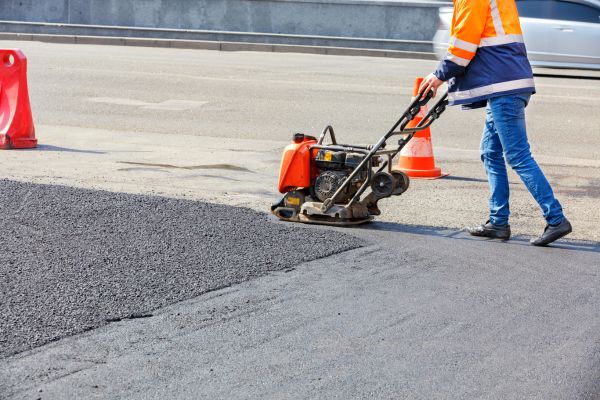Proper asphalt curing is essential for long-lasting performance and durability in commercial pavement projects, such as parking lots for businesses and apartment complexes. Unfortunately, several common mistakes can hinder the curing process and compromise the quality of the pavement. This article will highlight some of these mistakes and provide practical tips to help you avoid them, ensuring successful outcomes for your commercial pavement projects.
- Inadequate Compaction: One of the most common mistakes in asphalt curing is inadequate compaction during installation. Insufficient compaction can result in air voids and poor density, leading to premature deterioration and decreased durability. Ensure that your pavement contractors use proper compaction techniques, including vibratory rollers, to achieve the recommended density for the asphalt mix.
- Incorrect Asphalt Mix Selection: Choosing the wrong asphalt mix for a commercial parking lot can have significant consequences on the curing process and overall performance. Projects require different asphalt mix designs based on traffic volume, climate conditions, and expected loads. Collaborate closely with your asphalt supplier or contractor to select the appropriate mix that meets the specific requirements of your commercial project.
- Ignoring Moisture Evaporation: Moisture evaporation is crucial in the asphalt curing process. Failing to consider this factor can lead to extended curing times, reduced strength, and decreased pavement longevity. Avoid applying sealcoating or traffic too soon after asphalt installation to promote proper moisture evaporation. Allow sufficient time for the moisture to escape from the pavement, ensuring optimal curing.
- Lack of Temperature Control: Temperature plays a vital role in asphalt curing. Extreme temperatures —whether too hot or too cold— can adversely affect curing. It is crucial to consider the ambient temperature during asphalt installation and curing. In colder weather, preheating the asphalt mix or using additives can aid in achieving proper curing temperatures. In hot weather, cooling measures or a temporary asphalt surface coating can help control temperature and prevent premature curing.
- Inadequate Quality Control: Effective quality control measures are essential to ensure proper asphalt curing. Without regular inspections and testing, it becomes challenging to identify potential issues early on. Implement a comprehensive quality control program that includes monitoring compaction, performing asphalt core samples, and conducting density testing. Regular checks throughout the curing process will help catch any problems and allow timely adjustments.
Conclusion: Avoiding common mistakes in asphalt curing is crucial for the success of commercial parking lot projects. By addressing issues like inadequate compaction, incorrect asphalt mix selection, poor moisture evaporation control, lack of temperature management, and insufficient quality control, you can ensure optimal curing and maximize the longevity of your pavement. Partnering with a professional and experienced pavement contractor who prioritizes these factors will help you achieve superior results and minimize future maintenance costs.


